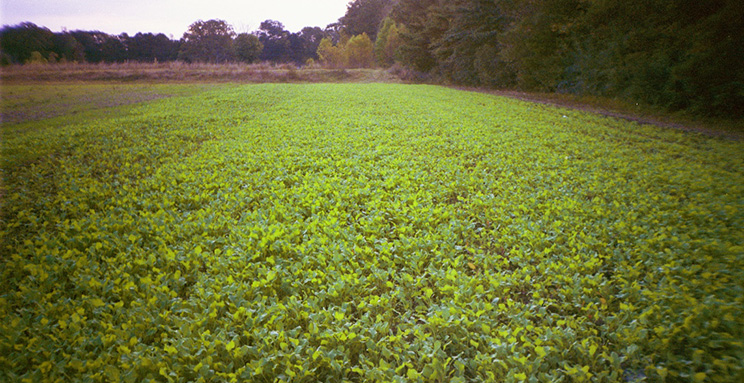
Food Plots Made Easy: 4 Ways To Establish Seeds, Encourage Growth, And Attract Game
It’s the time of year when we start fielding a lot of questions surrounding the best ways to establish and maintain a food plot. Most of our customers are surprised at how easy it can be to prep, plant, fertilize, and grow.
Here are our favorite tips to get yours started the right way, right away.
Forget soil type. Food plots need moisture.
This is probably the most common question we get: “Which food plot seed is best for my soil, my elevation, and my climate? While those factors play a role, the most important element is how much moisture is present in the soil. Almost any soil in most climates will grow food plots if enough moisture is available. Can you grow a food plot on sandy soil? Yes, if you get enough rain. Can you grow a food plot in a dry climate? Yes, if you have a way to irrigate.
Food plots also need sun.
Food plots need sunshine and proper soil temperatures to grow. It doesn’t matter where your food plot is located in the country, if you have adequate sunlight and the soil is warm enough to encourage germination (and you keep moisture in mind), you’ll have a thriving food plot on your hands. Ideally, you’re looking for at least 6 hours of daily sunshine and a soil temperature of 60 degrees at the time of planting. While plants will grow in colder weather and lower soil temps, they may emerge more slowly and take longer to establish. They will not germinate in frozen soils.
It’s worth it to fertilize.
Spend the money needed to make sure the plot is fertilized sufficiently. You will be much happier with a smaller, well-fertilized food plot than a larger food plot on depleted soil. The amount of fertilizer will depend on the crop; most state extension services will perform soil tests for a small fee and will give you a prescription fertilizer recommendation for the plot crop you intend to plant. If you are not going to test your soil, it is generally recommended to use 300 pounds of 13-13-13 fertilizer per acre at planting and to put 150 pounds of 33-0-0 or 34-0-0 per acre on food plants with brassicas or small grains every four to six weeks through the season.
Do not plant too deep.
Do the best you can to prepare a seed bed to make sure the seed contacts the soil but isn’t smothered by it. Clovers and brassicas thrive best with soil coverage that is less 1/4 inch. Small grains and peas can be covered up to about 1.5 inches deep. Resist the urge to drag a heavy harrow over the plot after planting it; the harrow nearly always forces seeds too deep into the soil, depriving them of the needed warmth and sunlight to germinate.
Food plots are easy, but they are just as easy to overthink. If you have additional questions, we’re available via email and phone to give you the information you need to get started.